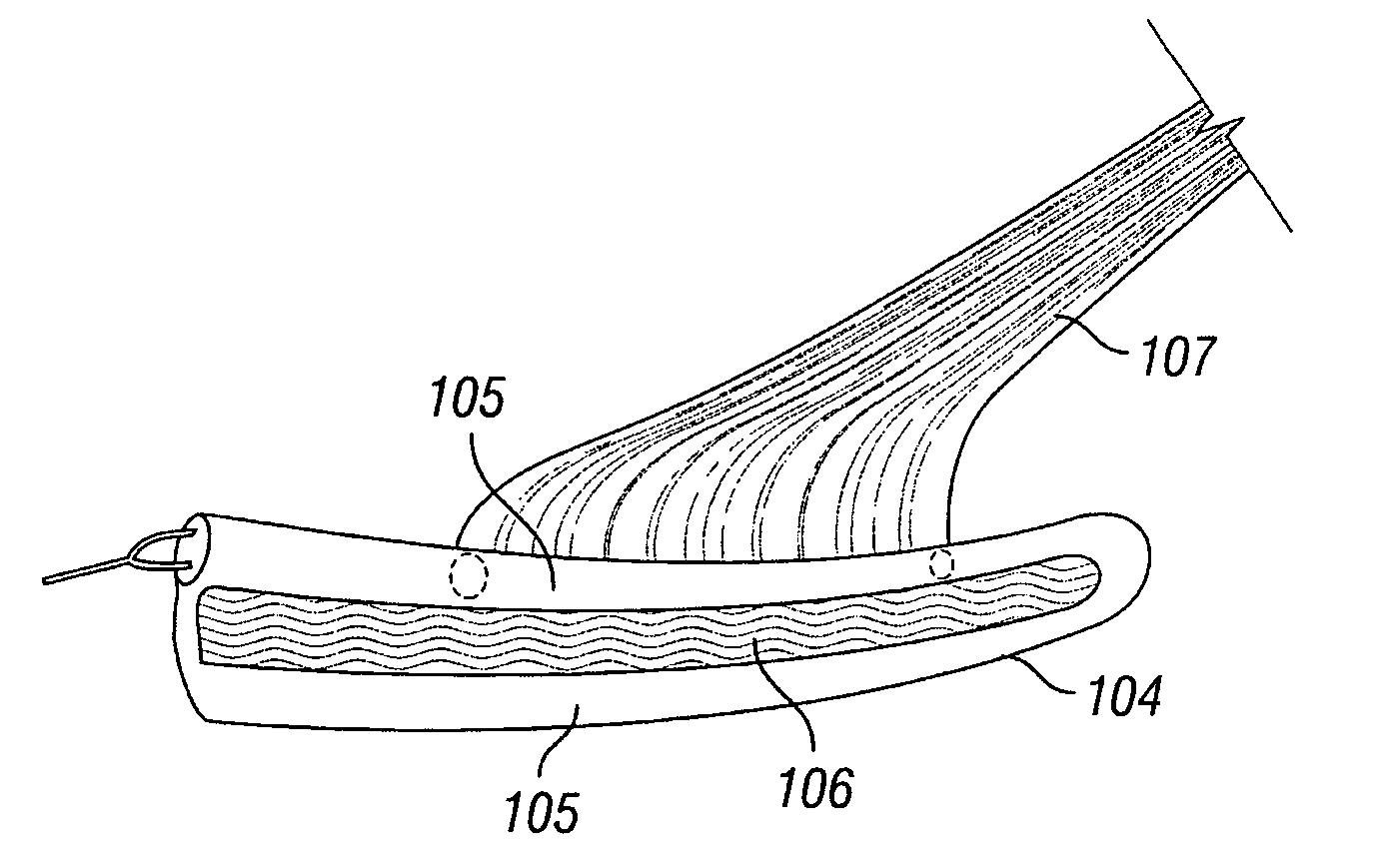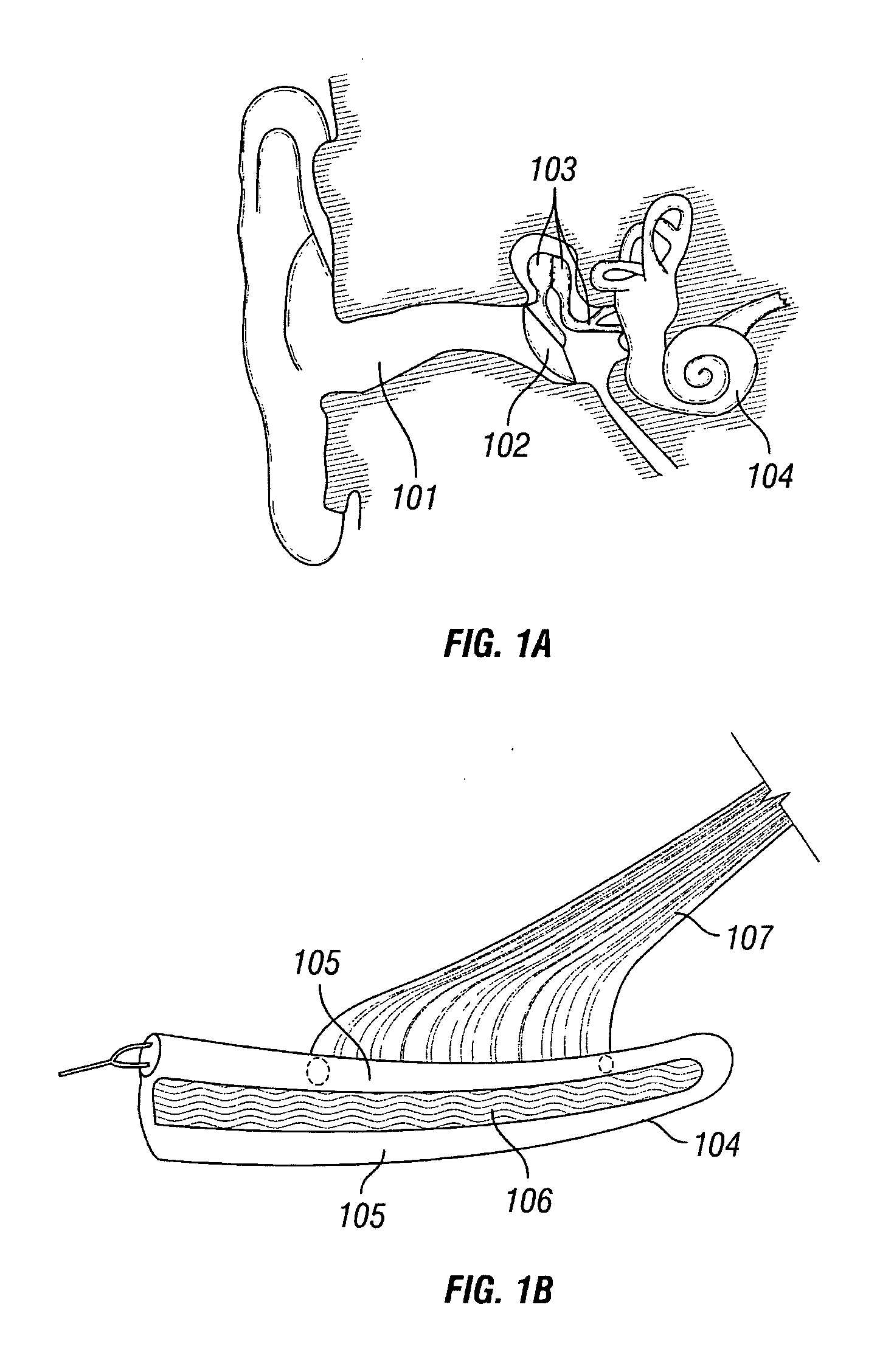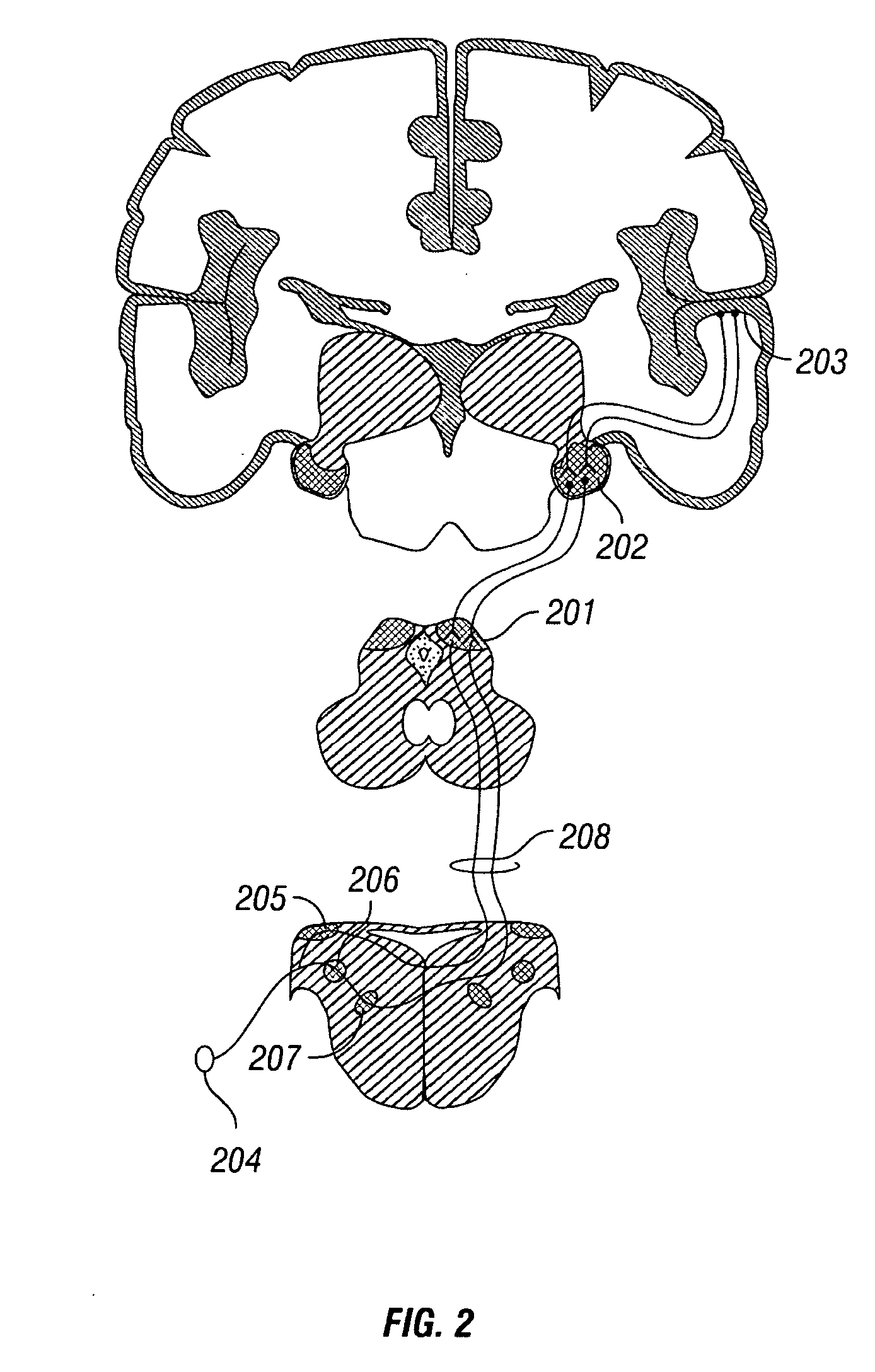Peripheral nerve stimulation to treat auditory dysfunction
a peripheral nerve and auditory technology, applied in the field of neuronal tissue stimulation for medical treatment, can solve the problems of aggravated existing cases, tinnitus in some patients, and detectable noise to both the subject and an outside observer
- Summary
- Abstract
- Description
- Claims
- Application Information
AI Technical Summary
Benefits of technology
Problems solved by technology
Method used
Image
Examples
example 1
Treatment of Tinnitus
[0111] Thirteen patients with tinnitus were treated by stimulating at least one peripheral nerve. 200 Hz, 250 microsecond pulse width pulses were used with amplitude dependent on an individual threshold. Of these, four noted a decrease in tinnitus, one noted an increase and eight had no alteration in tinnitus. Tinnitus was evaluated using TMS, TENS, the Goebel tinnitus questionnaire, audiometry, tinnitus matching, impedence, BAEP, and OAE.
example 2
Treatment of Auditory Agnosia and Tinnitus
[0112] Auditory agnosia is characterized by a relatively isolated deficit in auditory comprehension despite normal hearing. When only verbal material is not understood, it is often called word deafness; when the deficit is in recognizing environmental sounds, it is often termed nonverbal auditory agnosia (Saygin, Dick et al. 2003).
[0113] In a patient suffering word deafness with associated complete auditory agnosia (verbal and non-verbal) and bilateral tinnitus, TENS stimulation was capable of attenuating the tinnitus and improving auditory agnosia during stimulation. In order to obtain a permanent suppression a bilateral subcutaneous occipital nerve stimulation was implanted leading to a continuous improvement of both tinnitus and auditory agnosia.
Patient History:
[0114] After a flu like syndrome a patient became comatose due to a bilateral herpes encephalitis, from which she recovered. Initially she presented with a complete cortical d...
PUM
 Login to View More
Login to View More Abstract
Description
Claims
Application Information
 Login to View More
Login to View More - R&D
- Intellectual Property
- Life Sciences
- Materials
- Tech Scout
- Unparalleled Data Quality
- Higher Quality Content
- 60% Fewer Hallucinations
Browse by: Latest US Patents, China's latest patents, Technical Efficacy Thesaurus, Application Domain, Technology Topic, Popular Technical Reports.
© 2025 PatSnap. All rights reserved.Legal|Privacy policy|Modern Slavery Act Transparency Statement|Sitemap|About US| Contact US: help@patsnap.com



